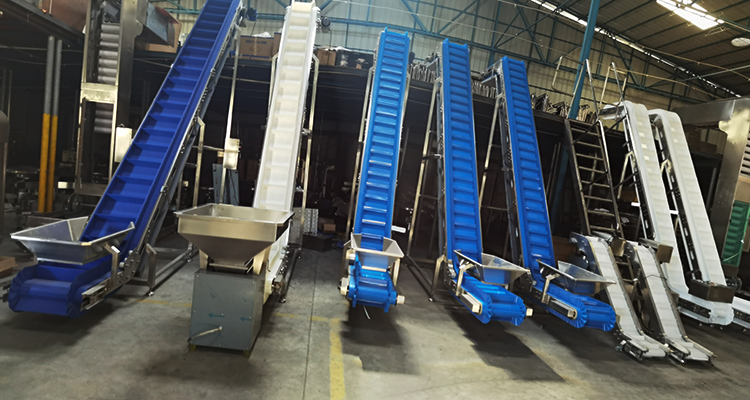Kumba wokhetho, abathengi abatsha nabadala bahlala benalo mbuzo, ngubani ongcono, ibhanti lokuhambisa lePVC okanye ibhanti lokuhambisa ukutya lePU? Ngokwenyani, akukho mbuzo wokulungileyo okanye okubi, kufanelekile okanye awufanelekanga kwishishini lakho kunye nezixhobo. Ke ungakhetha njani ibhanti lokuhambisa elichanekileyo kwishishini lakho kunye nezixhobo? Ukucinga ukuba ukuhanjiswa ziimveliso ezidliwayo, ezinjengeetyhubhu zeswekile, i-pasta, inyama, ukutya kwaselwandle, iimpahla ezibhakiweyo, njl., Isiqalo yibhanti yokuhambisa ukutya kwePU.
Izizathu zebhanti yokuhambisa ukutya yePU zezi zilandelayo:
I-1: Ibhanti yokuhambisa ukutya ye-PU yenziwe nge-polyurethane (i-polyurethane) njengomgangatho, obala, ococekileyo, ongenabuthi kunye nevumba, kwaye unokuchukunyiswa ngokuthe ngqo ngokutya.
I-2: Ibhanti yokuhambisa i-PU ineempawu zokunganyangeki kweoli, ukuxhathisa kwamanzi kunye nokunqanda ukusika, umzimba webhanti uncinci, ukuxhathisa okulungileyo, kunye nokuchasana nokutsala.
I-3: Ibhanti yokuhambisa i-PU inokuhlangabezana nesatifikethi sebakala lokutya le-FDA, kunye nokutya ngokuthe ngqo ukudibana ngaphandle kwezinto ezinobungozi i-polyurethane (PU) i-soluble kwi-raw-grade-raw materials, eyaziwa ngokuba yizinto zokutya eziluhlaza. I-Polyvinyl chloride (PVC) iqulethe izinto ezinobungozi kumzimba womntu. Ke ngoko, sicinga ukuba umsebenzi ubandakanya ishishini lokutya, kulungile ukukhetha ibhanti lokuhambisa le-PU ngokwembono yokhuseleko lokutya.
I-4: Ukuqwalasela ukuqina, ibhanti lokuhambisa ukutya kwe-PU linokunqunyulwa kwaye lingasetyenziselwa umsiki emva kokufika kwinqanaba elithile, kwaye linokunqunyulwa ngokuphindaphindiweyo.Ibhanti yokuhambisa i-PVC isetyenziselwa ikakhulu ukuhanjiswa kokupakishwa kokutya kunye nokuhanjiswa okungekho ukutya. Ixabiso layo liphantsi kunebhanti lokuhambisa le-PU, kwaye ubomi bayo benkonzo ngokuqhelekileyo bufutshane kunebhanti yokuhambisa i-polyurethane.
Ixesha lokuposa: Sep-03-2024

